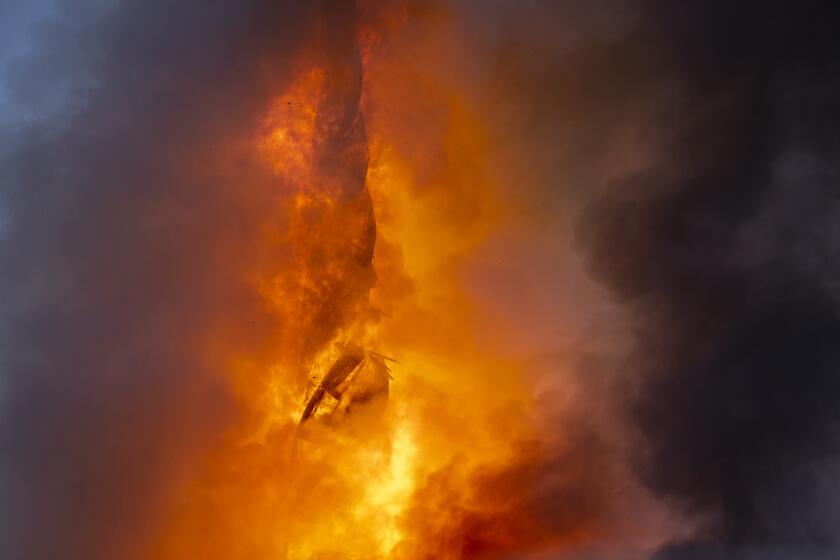Crude Leak Plugged in Alaska Pipeline
At least 20,000 gallons of crude oil have spilled from a corroded pipeline near Prudhoe Bay in northern Alaska, state officials said Wednesday, adding that cleanup crews were hampered by severe conditions such as wind-chill temperatures of 50 degrees below zero.
The leak has been plugged, and cleanup crews with giant vacuum trucks known as “super suckers” have been deployed to gather the spilled oil, said Lynda S. Giguere, a spokeswoman for Alaska’s Department of Environmental Conservation.
The quarter-inch hole in the 34-inch-wide pipeline, about 650 miles north of Anchorage, was detected last Thursday.
It is at a point in the line covered by a mound of gravel designed to let caribou cross the pipeline.
An official estimate of the size of the spill is not expected until today, Giguere said. Cleanup crews have recovered about 58,000 gallons (or approximately 1,380 barrels) of crude oil mixed with snow from the frozen tundra, she said, adding that no determination had been made on how much of it was crude or how severe the environmental impact would be.
The largest spill on record along the 800-mile Trans-Alaska Pipeline occurred shortly after it opened in 1978, when vandals blew up a section, causing about 700,000 gallons to escape. The Exxon Valdez spilled 11 million gallons when it ran aground in Alaska’s Prince William Sound in 1989.
In 2001, a man fired his hunting rifle into the pipeline, creating a leak that spilled about 285,000 gallons onto the tundra and led to a $7-million cleanup. Authorities arrested the 37-year-old hunter and he was convicted on federal weapons charges; it was not considered a terrorist incident. Pipeline operators say that it has been shot at through the years at least 50 times, but that the incident was the first time a bullet had punctured the double-steel-walled pipeline.
The spill on the North Slope occurred in a “feeder line” to the main pipeline, causing a shutdown of that line and a temporary drop in overall production.
Alaska is a major source of oil for West Coast refineries.
The pipeline is supposed to be monitored for any evidence of a drop-off that could signal a leak in the system; and when a leak is detected, the pipeline is shut off to limit the fallout.
Some industry watchdogs say the aging pipeline will become increasingly vulnerable to corrosion. “It’s like a garden hose going bad on you,” said Chuck Hamel, a former oil and tanker broker who runs a website that monitors Alaska oil development. “You patch one leak but then you’ll get another.”
But a spokesman for BP Exploration (Alaska) Inc., which runs the section of the pipeline that leaked, disputed that characterization.
“We have a very aggressive, robust corrosion monitoring program,” said the spokesman, Daren Beaudo.
He said the company thought it had a “very effective cleanup” going on.
Pipeline operators say that spills have amounted to less than a teaspoon in a swimming pool when compared to the overall volume of oil delivered.
In 1999, six pipeline employees wrote anonymously to federal officials arguing that neglect and maintenance cuts on the pipeline could lead to disaster.
“It won’t be a single gasket, or valve, or wire, or procedure, or person that will cause the catastrophe,” the employees wrote. “It will be a combination of small, perhaps seemingly inconsequential events and conditions that will lead to the accident that we’re all dreading and powerless to prevent.”
More to Read
Start your day right
Sign up for Essential California for news, features and recommendations from the L.A. Times and beyond in your inbox six days a week.
You may occasionally receive promotional content from the Los Angeles Times.






